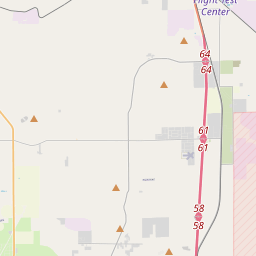Inscription
This Highly Maneuverable Aircraft Technology demonstrator, the second of two built, was designed to test technologies that would improve the maneuverability of future U.S. fighters. NASA, the Air Force Flight Dynamics Laboratory, and Rockwell International developed it jointly.
HiMAT was remotely piloted research vehicle that was flown from a ground cockpit to reduce costs and risks inherent in flight test with full-scale, manned aircraft. An on-board television camera gave the pilot forward vision. Swept wings, a digital fight control system, winglets, and canards gave the HiMAT a turning radius nearly half that of conventional U.S. fighters. Lacking a pilot, and because of its enhanced structural strength, the HiMAT was capable of making sustained 8g turns at Mach 0.9.
The HiMAT was air-launched from the B-52 mothership and landed on Rogers Dry Lake. Twenty-six flights were made with the two aircraft between mid-1979 and January 1983.
HiMAT was remotely piloted research vehicle that was flown from a ground cockpit to reduce costs and risks inherent in flight test with full-scale, manned aircraft. An on-board television camera gave the pilot forward vision. Swept wings, a digital fight control system, winglets, and canards gave the HiMAT a turning radius nearly half that of conventional U.S. fighters. Lacking a pilot, and because of its enhanced structural strength, the HiMAT was capable of making sustained 8g turns at Mach 0.9.
The HiMAT was air-launched from the B-52 mothership and landed on Rogers Dry Lake. Twenty-six flights were made with the two aircraft between mid-1979 and January 1983.
Details
| HM Number | HM2B1S |
|---|---|
| Tags | |
| Placed By | NASA Neil A. Armstrong Flight Research Center |
| Marker Condition | No reports yet |
| Date Added | Sunday, September 2nd, 2018 at 11:04am PDT -07:00 |
Pictures
Locationbig map






| UTM (WGS84 Datum) | 11S E 418911 N 3867998 |
|---|---|
| Decimal Degrees | 34.95126667, -117.88808333 |
| Degrees and Decimal Minutes | N 34° 57.076', W 117° 53.285' |
| Degrees, Minutes and Seconds | 34° 57' 4.56" N, 117° 53' 17.1" W |
| Driving Directions | Google Maps |
| Area Code(s) | 661, 760 |
| Which side of the road? | Marker is on the right when traveling North |
| Closest Postal Address | At or near 1598 Forbes Ave, Edwards Air Force Base CA 93523, US |
| Alternative Maps | Google Maps, MapQuest, Bing Maps, Yahoo Maps, MSR Maps, OpenCycleMap, MyTopo Maps, OpenStreetMap |
Is this marker missing? Are the coordinates wrong? Do you have additional information that you would like to share with us? If so, check in.
Maintenance Issues
- Is this marker part of a series?
- What historical period does the marker represent?
- What historical place does the marker represent?
- What type of marker is it?
- What class is the marker?
- What style is the marker?
- Does the marker have a number?
- What year was the marker erected?
- This marker needs at least one picture.
- Can this marker be seen from the road?
- Is the marker in the median?

Comments 0 comments